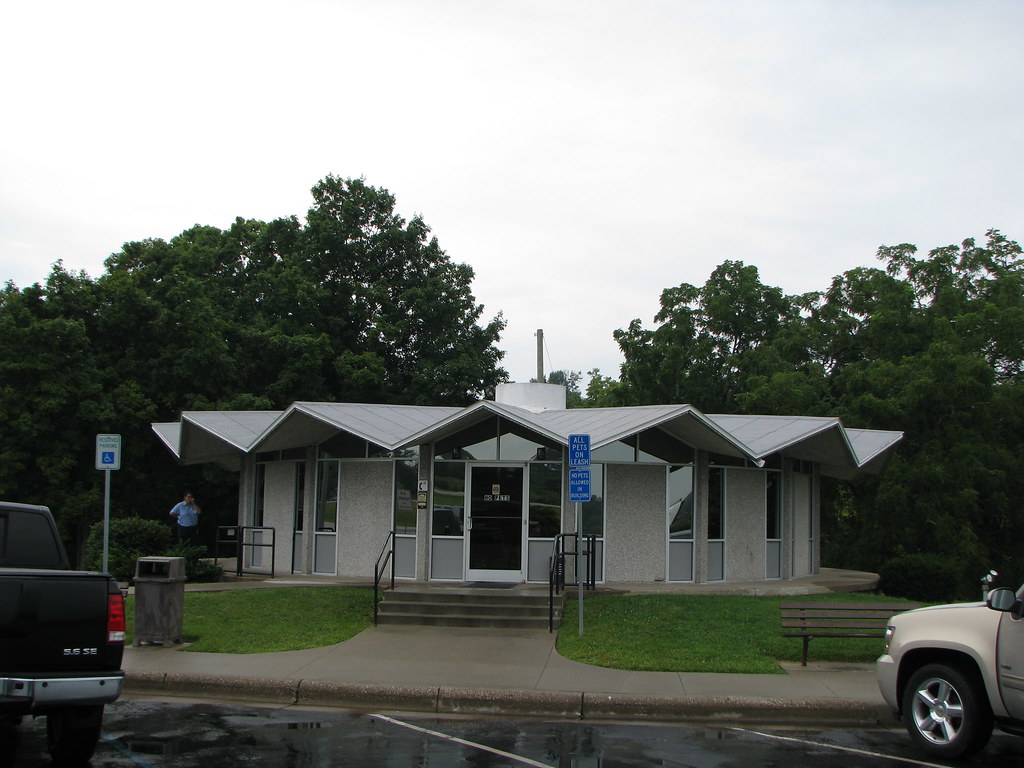I wanted this to be a lighthearted post. As I poked around the online maps as I frequently do, I found a rest area along Interstate 80 in western Utah. There I found one of the most remote, desolate places I’ve ever seen. Just take a look around (map). Barely a speck of shade exists anywhere on that parched empty plain except where created by the pavilion in the foreground.
Bonneville Salt Flats

I’d encountered the Bonneville Salt Flats (just outside of Wendover, actually). It seemed amazingly flat and aligned almost perfectly with the curvature of the earth. These unique characteristics made the flats famous for land speed records for wheeled vehicles exceeding 600 miles per hour.
Thus the hunt began for similarly unusual highway rest areas. It shouldn’t be too difficult with nearly 2,500 to chose from along the Interstate highway system. However I came upon some disturbing news during that quest. The era of the rest stop may be approaching its end. It may fall victim to budget cuts and a common belief that gas stations strung along highway exits are “good enough.” I realized that I’d run headlong into this issue just a couple of weeks earlier. Unfortunately its implications hadn’t dawned on me at the time.
Ladysmith, Virginia
Notice this rest stop along Interstate 95 near Ladysmith, Virginia. I’ve stopped here plenty of times over the years and planned to do so again at about the halfway point during my drive back from Williamsburg. This time, however, it was closed. The Virginia Department of Transportation placed bright orange barrels across the exit to prevent anyone from entering just in case we hadn’t already gotten the point from the large signs posted for the last couple of miles.
Admittedly this wasn’t the most attractive stop along the highway system. Nonetheless it always served as a convenient place to stretch one’s legs and take care of other necessities, and quickly return to driving. I also enjoyed the brick colonial style of the information center. It reminded me of “old Virginia” from days long ago, an attempt to impart some local culture upon travelers in transit.
The larger issue is beginning to receive attention from the mainstream press. These including prestigious sources as the Wall Street Journal. Last July they reported, R.I.P.: Budget Woes Spell Doom for Roadside Rest Stops. You can read the article yourself if it interests you. Briefly, it touches on the situation in Virginia and other states that believe rest stops have become an anachronism. Tough economic times only hasten their demise.
But what about rural areas where few alternatives exist? Sure, places along the coasts and throughout the Midwest offer plenty of exits with mega-gas stations just waiting to entice customers for a stop. Maybe they’ll even buy a soda and a lotto ticket while they’re at it. However huge empty stretches mark the great plains, desert southwest, great basin and northern tier. Few services exists there.
Medora, North Dakota
This is Interstate 94, seven miles east of Medora, North Dakota. Where can someone find rest if not at this humble wayside? While there may be some logic to closing the rest stops in populous locations it doesn’t make a lot of sense in others. These faraway stops are probably safe.
There are a surprising number of websites, I discovered, that are involved with rest stop issues. This proves to my great amazement once again that at least one website exists for truly everything. One of the best is Rest Area History.Org. This takes a nostalgic look back at the golden years of the American highway system in the 1950’s and 1960’s, examining culture and architecture in particular, and transposes it into the modern era. Other sites, Interstate Rest Areas for example serve more practical and utilitarian purposes. It lists pretty much every rest stop along every Interstate highway in the United States.
Still other sites focus on preservation. “Save Texas Roadside Parks” would be an example of that genre. They examined some unique picnic pavilions shaped like the heads of longhorn cattle in one recent entry. That’s one of the features of roadside stops in general that would be terrible to lose. It’s hard to tell one gas station from another in any part of the country but many of the public waysides go beyond utilitarian. They reflect the pride of their state or their region. Whether it be the brick colonials of Virginia or the longhorn cattle of Texas, these stops are often anything other than generic.
Mount Sterling, Kentucky
I’ll provide one more image, this one along Interstate 64 in Kentucky near Mt. Sterling. The Wall Street Journal article mentions a historic structure that’s probably safe from destruction and I’m pretty sure this is the one (map).

While this one might survive because of its historic nature, the same might not hold true for those built in latter eras. Perhaps not all of them need to be saved, maybe not even a majority of them, but they will be gone before we realize their significance.
Should the government compete with industry when it comes to relieving oneself? Are rest stops an indulgence or a public service? These are tough trade-offs that citizens and their elected officials will need to decide. I simply bemoan the loss of them as cultural icons, beacons of convenience, and markers in time defining Interstate travel for the last half-century. Someday we may all look back nostalgically and say, Remember When…?

Leave a Reply